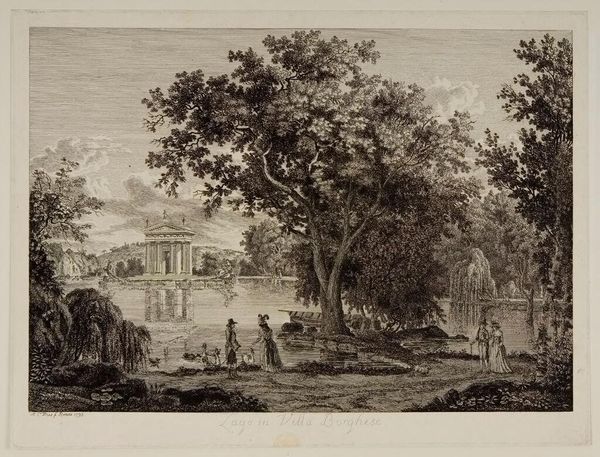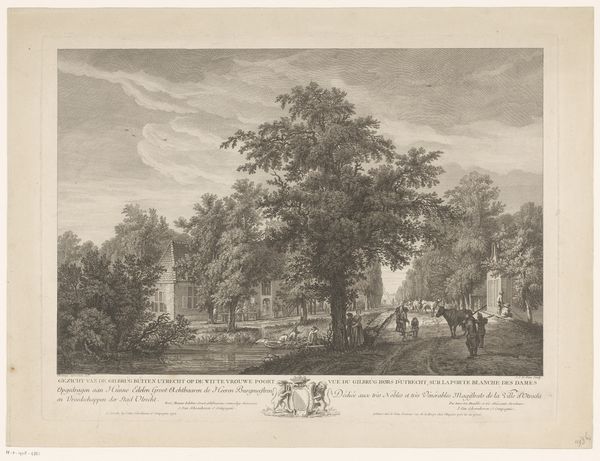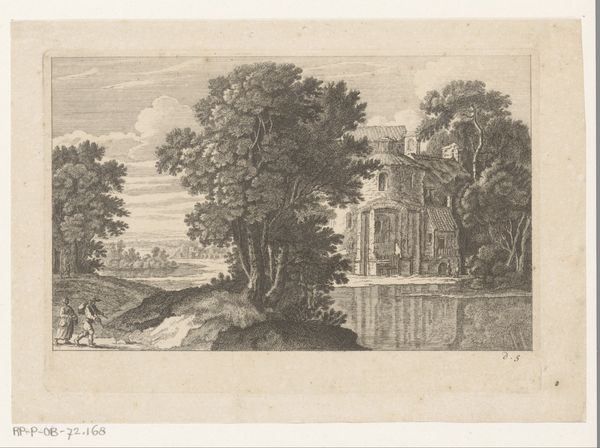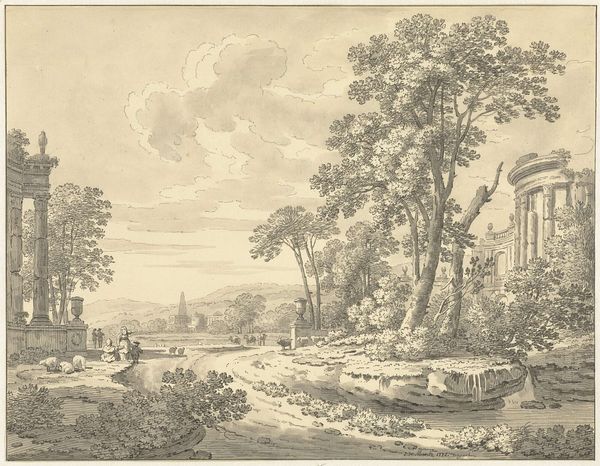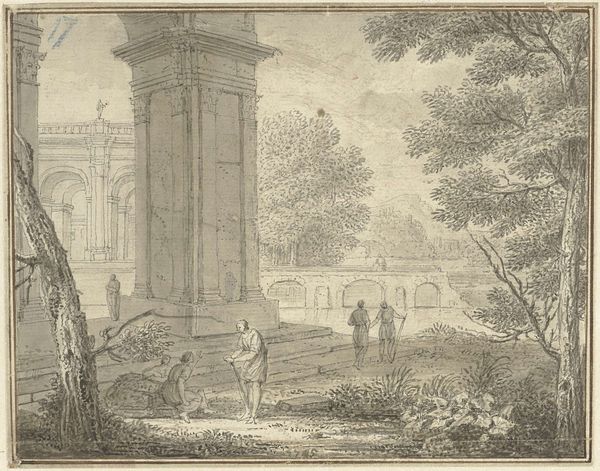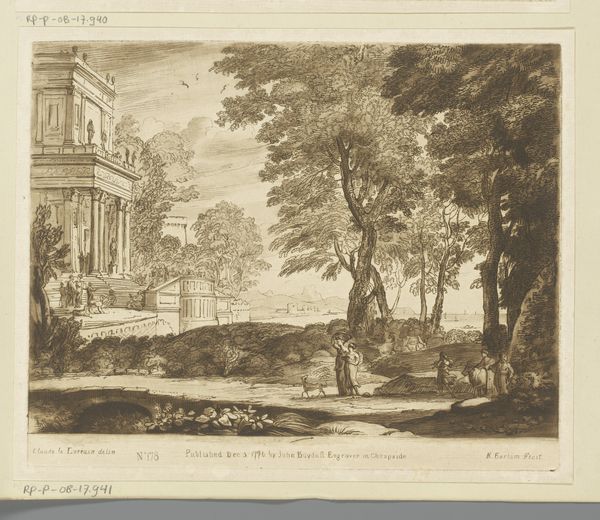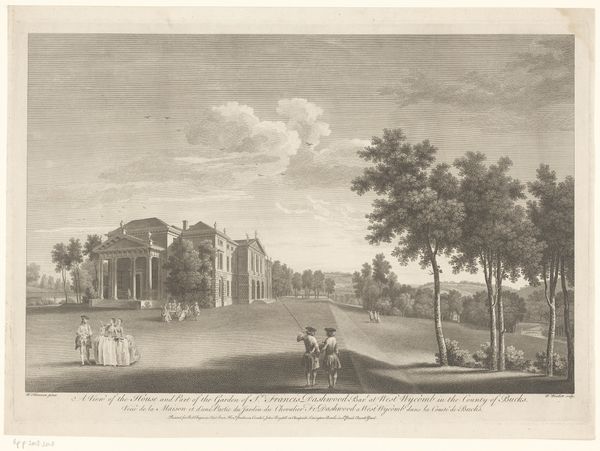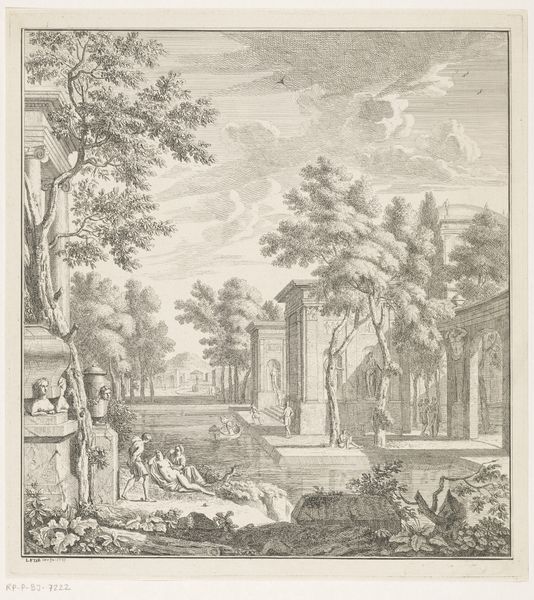
drawing, print, etching, paper
#
drawing
# print
#
etching
#
landscape
#
paper
#
romanticism
#
cityscape
Dimensions: 280 × 377 mm (plate); 290 × 297 mm (sheet)
Copyright: Public Domain
Editor: This is "Lake in Villa Borghese," an etching by Albert Christoph Dies from 1793. The landscape is incredibly detailed, almost photographic. What aspects of its production and social context stand out to you? Curator: The meticulous etching technique is immediately significant. Dies' labor is evident in the countless lines that create the textures of the leaves and the water's surface. Consider the etcher’s relationship to the Roman elite who frequented and commissioned views of such idyllic sites. Editor: So the means of production influenced who saw it and why? Curator: Precisely. Etchings allowed for wider, yet controlled distribution compared to unique paintings. This image participated in shaping perceptions and selling ideas about the Borghese gardens and the leisure it afforded. Consider what that labor meant in relation to landscape's commodification, and the social values reflected in its depiction. What choices did the artist make in translating what he saw to this specific print? Editor: I notice how detailed the natural elements are – the foliage and the water – compared to the figures. Could that prioritize the idea of 'landscape' as a consumable object, outweighing the importance of human presence? Curator: That's a sharp observation. It challenges the traditional hierarchy in art where the human figure often takes precedence. By focusing on the natural and architectural features, Dies arguably highlights the villa's appeal as a cultivated, consumable space rather than dwelling on the individuals enjoying it. We must reflect, therefore, on how art, particularly prints like this, function as material goods tied to consumption and class. Editor: It's amazing to think about how much this single print reflects about 18th-century society's values and economics! Curator: Exactly. It reminds us that even seemingly simple landscapes carry within them complex narratives of labor, ownership, and cultural aspiration.
Comments
No comments
Be the first to comment and join the conversation on the ultimate creative platform.
